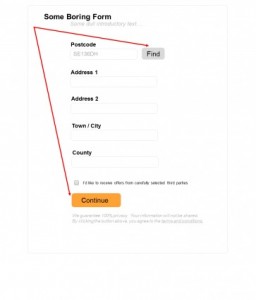6 Tips for Calculating Payroll

Calculating payroll for your business can feel like a draining, stressful process. But it doesn’t have to be that way. There are easy tools available online that can help you calculate payroll quickly and efficiently.
As a business owner, you know that time is money. Completing payroll calculations and getting them out of the way can get you back to work in other areas of your company.
But be sure to find the correct information and support. Making a mistake with payroll could cause serious problems for your business.
Inaccurate payroll calculations could also present problems for your workers, whether they’re full-time employees or contractors. Everyone who works with your company needs to feel secure. So the money they’re receiving and any deductions you’re taking out of their pay must be accurate and complete.
Here are six essential tips for properly calculating and handling payroll.
1. Create a solid schedule.
Payroll isn’t a “when you get around to it” kind of issue. On the contrary, it’s a very important part of operating your business correctly.
Your employees expect to be paid on specific dates. Contractors also expect timely compensation.
When you have a good schedule for payroll, it gets handled the right way. You won’t forget to complete the necessary forms. There will be no delays getting payments to your workers.
You could get into legal trouble if you don’t pay your workers, so you want to be sure you take payroll dates seriously.
2. Use a payroll calculator.
Making sure payroll runs smoothly is a critical part of doing business. Unfortunately, it can also be a time-consuming task with a significant margin for error. Even professionals proficient with numbers make mistakes.
Fortunately, many online payroll calculators make it easy for employers to handle the basics, such as figuring out withholdings and deductions in their state without breaking a sweat. Some even assist with more complex items such as garnishments, 401(k) contributions, and gross-ups.
Ultimately, payroll calculators provide peace of mind and help business owners avoid common paycheck mistakes that could draw the attention of Uncle Sam when tax time rolls around.
3. Stay up with current requirements.
Tax requirements, payroll rules, and labor laws are essential. However, these specifics also change over time.
You want to be sure you’re using the most current information. Otherwise, you could accidentally create problems for your company and your workers.
You can generally get current information from the IRS and your state’s government and labor board. However, if you use online software or work with a payroll company, much of that will be handled for you.
Still, make sure you pay attention to changes and don’t be afraid to ask questions if something seems different.
4. Categorize your workers properly.
Making sure to accurately categorize your workers is an important step in calculating payroll. You may have all employees or a mix of employees and contractors. Some of your employees might be salaried, while others are hourly.
There’s nothing wrong with any of those. You just need to be sure that you’re handling their payroll properly.
For example, you would normally pay a contractor the full amount owed without deductions. Employees, though, would have taxes taken out of their checks. They might also have deductions for health insurance, a retirement account, or other specifics.
If you don’t have a worker categorized the right way, they could end up being paid unfairly.
5. Be sure you understand deductions.
You want to be certain you’re taking the proper deductions from every worker’s payroll. Everything from an IRA to court-ordered child support could be coming from some of your workers’ checks.
If you aren’t clear on what taxes and other deductions need to come out, you could have underpayment or overpayment issues. You don’t want to cause a problem for an employee who doesn’t realize their check isn’t accurate or an important item is going unpaid.
If you’re not clear on the type and amount of any deduction that needs to be part of payroll, seeking advice is important. You can use payroll calculators or software to catch any issues.
Some businesses also turn payroll over to another company to reduce problems. But you still have to make sure all the right information is getting to that company. Taking deductions seriously is a big part of handling your business’s payroll.
6. Automate everything you can.
Among the ways to make calculating payroll easier is automation.
When you automate all possible steps, it reduces the chance of making a mistake. It’s also faster and more efficient. You’ll have more peace of mind when your payroll calculations are automated, as well. There’s so much that needs to be done when running a business, and automation reduces your overall workload.
Payroll calculators and other software support are among the best ways to automate the process. You can quickly put in the information, and the rest of the process will happen on its own. Not only is that efficient, but handling all of the payroll at one time can be quick and easy. Then it’s an item off of your list and one less thing to worry about.
The bottom line for calculating payroll is that it doesn’t have to be stressful and difficult.
It doesn’t matter whether you’re just getting started with your company or expanding your team. Payroll is important. Taking it seriously matters, but it doesn’t need to cause you anxiety. When you use the right tools and have some support, you can manage payroll efficiently. Then you can get back to focusing on other areas of your company that need your attention.
Featured Image Credit: Tima Miroshnichenko; Pexels; Thank you!
The post 6 Tips for Calculating Payroll appeared first on ReadWrite.
(40)
Report Post







